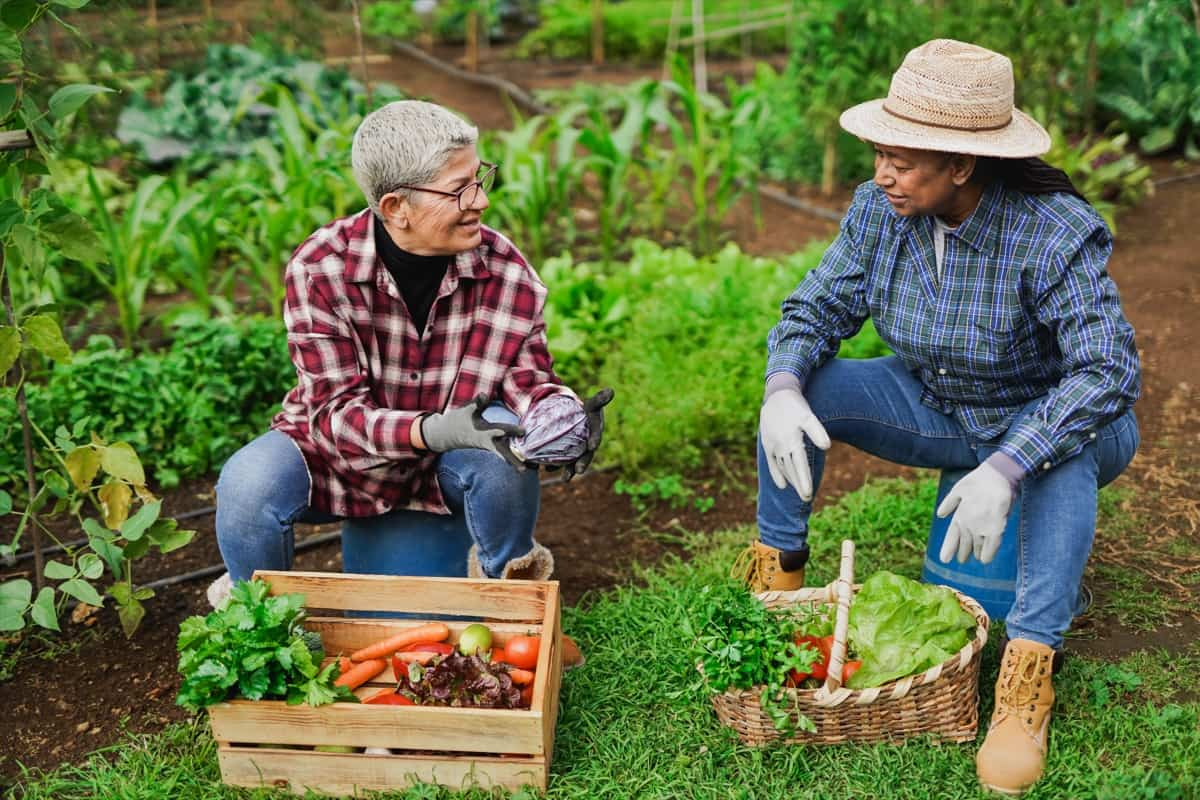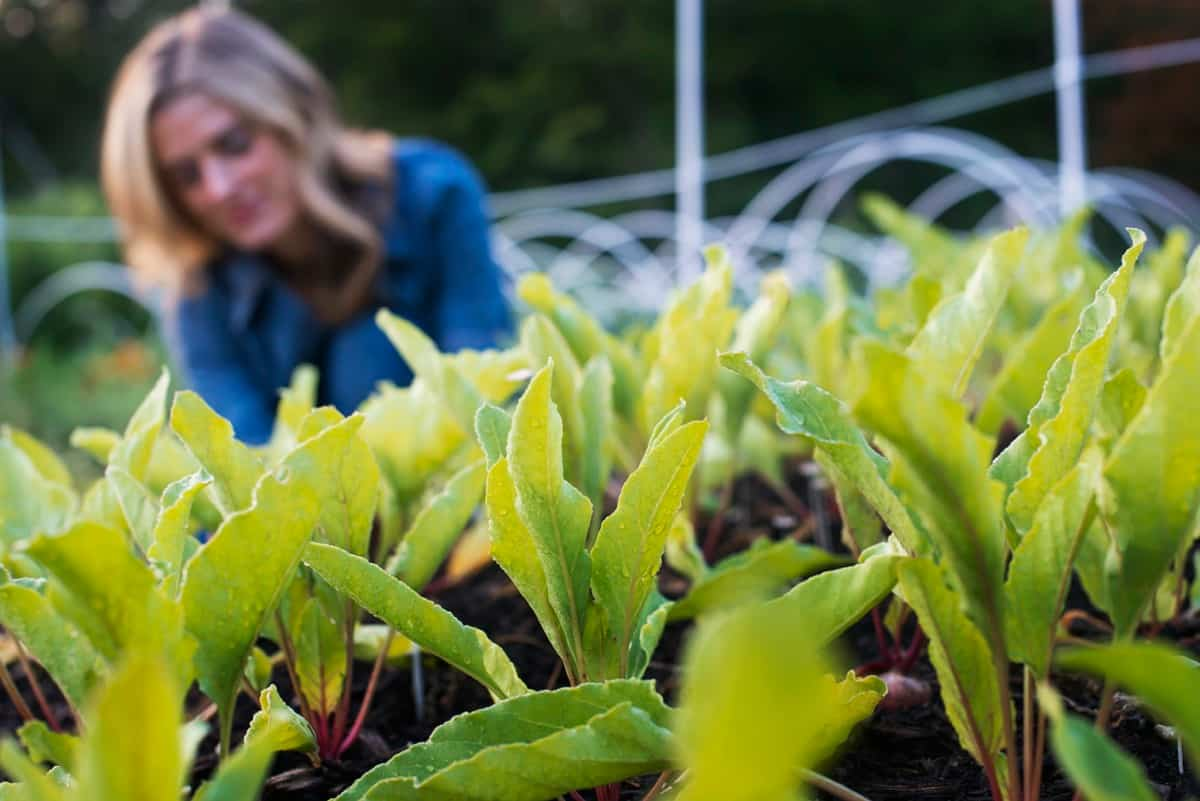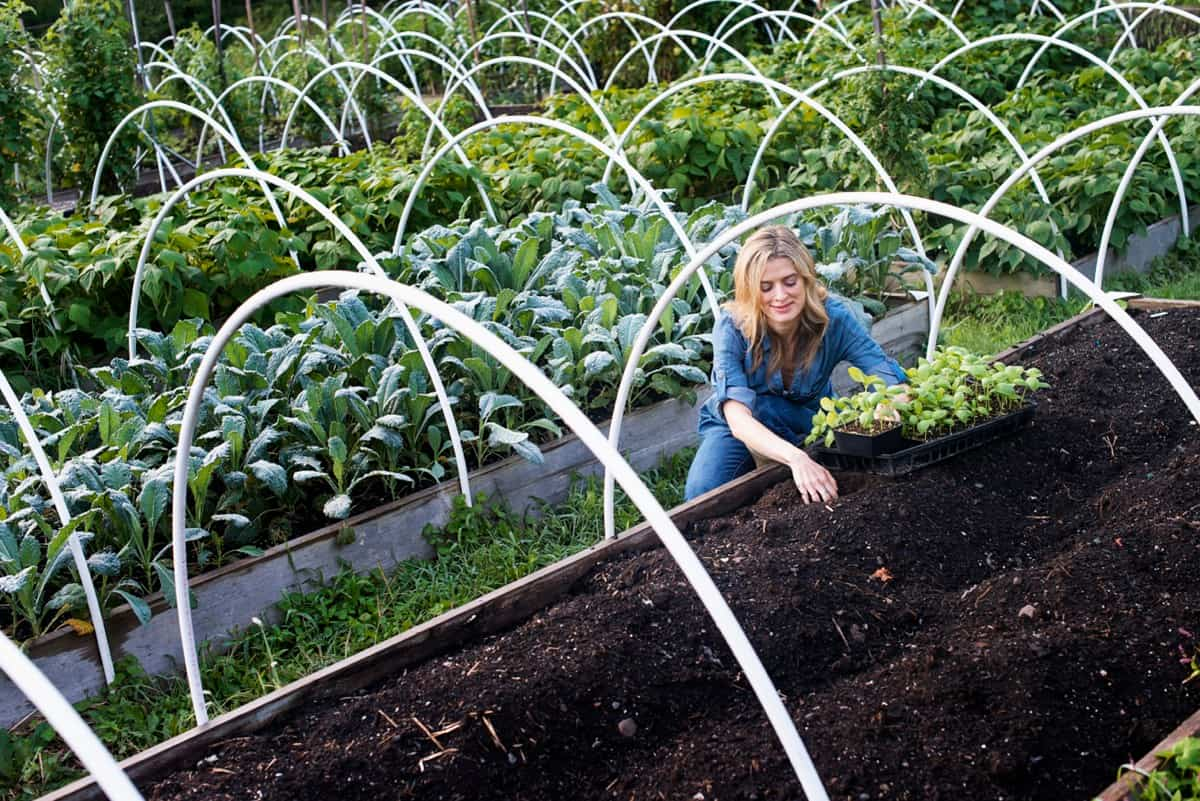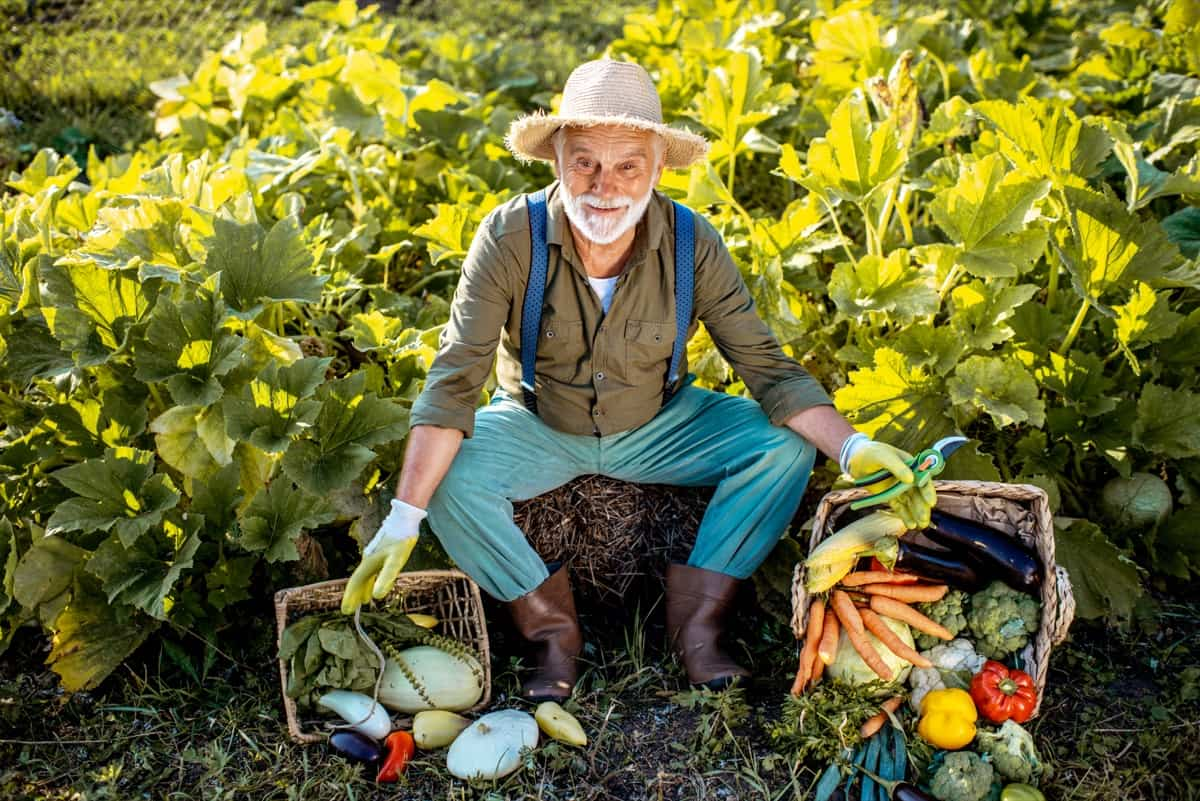Florida, the Sunshine State, with its balmy temperatures and sandy soils, offers a unique opportunity for gardening enthusiasts. One can’t discuss Florida vegetable gardening month-by-month without appreciating the state’s varied climate, allowing a range of vegetables to thrive. From the north to Central Florida vegetable planting guide suggestions, it’s clear that seasonal shifts play a pivotal role.

In this guide, we delve into what vegetables you can grow in Florida in the summer, those easy vegetables to grow in Florida, and even offer a glimpse into the Florida vegetable planting calendar. Whether you’re wondering about the easiest vegetables to grow in Florida or looking for specifics, read on to know more.
Best Vegetables to Grow in Florida’s Winter Season
Florida’s temperature drops during winter, but not enough to deter many vegetables. Broccoli, cauliflower, and kale are top choices, as they thrive in cooler conditions. Moreover, radishes and turnips can be quickly sown, offering a crisp addition to winter salads. Not only do these vegetables withstand Florida’s mild winters, but they also bring color and variety to winter plates. Furthermore, collard greens and lettuce are foolproof choices for regions like Jacksonville or Tallahassee, where temperatures might dip a little lower.
Top Vegetables for Florida’s Summer Gardens
Answering the query, “What vegetables can you grow in Florida in the summer” isn’t as straightforward as it might seem. The state’s hot, humid summer days may seem challenging, but with the right choices, gardens can flourish. Sweet potatoes, okra, and southern peas are classic choices. These vegetables withstand the intense Florida sun and offer delicious culinary opportunities. Areas like Miami and Tampa, known for their scorching summers, will find these vegetables reliable.
Ideal Vegetables for Florida’s Spring Planting
As the Florida vegetable planting calendar progresses to spring, diverse vegetables come to the fore. Tomatoes, bell peppers, and cucumbers are garden staples, providing versatility in dishes from salads to main courses. Springtime in Orlando or Daytona Beach is characterized by moderate temperatures and occasional showers, perfect for beans and zucchinis. The moderate climate ensures these veggies grow robustly, offering abundant harvests.
Choosing Heat-tolerant Vegetables for Florida’s Hot Climate
Florida’s heat can be relentless, especially during peak summer. For a successful harvest, considering heat-tolerant varieties is crucial. Eggplants and chili peppers are champions when it comes to bearing the heat. Regions like Fort Lauderdale and Key West, which often see the mercury rising, benefit from planting such vegetables. Their resilience ensures not only survival but also a bountiful yield.
In case you missed it: Best Time to Plant Okra in Florida: Growing in Central, North, South, East, and West Region

Drought-resistant Vegetables for Florida’s Dry Spells
Despite the frequent summer storms, Florida can experience dry spells. During these periods, drought-resistant vegetables are invaluable. Swiss chard, cowpeas, and amaranth are among the top picks. They not only use water efficiently but also provide nutrition-packed harvests. These vegetables can be a gardener’s best friend in regions like Sarasota or Gainesville, where dry spells might be more pronounced.
Disease-resistant Vegetables for Florida’s Humid Conditions
Florida’s humidity can sometimes lead to fungal diseases in plants. To combat this, it’s wise to choose disease-resistant vegetable varieties. Mustard greens, pac choi, and arugula are resistant to most common plant diseases and add a spicy kick to dishes. In places like West Palm Beach or Naples, with their muggy atmospheres, these vegetables promise a healthy yield without the fuss of constant care.
Fast-growing Vegetables for Quick Harvests in Florida
Fast-growing vegetables are a boon for those impatient gardeners or those looking for a quick crop rotation. Radishes, spinach, and baby carrots fit the bill perfectly. Their rapid growth cycle ensures a quicker harvest, making them excellent choices for regions with unpredictable weather patterns, like Pensacola or Panama City.
Low-maintenance Vegetables for Busy Gardeners in Florida
In the hustle and bustle of modern life, many seek easy vegetables to grow in Florida, requiring minimal attention. Enter vegetables like kale, mustard greens, and bush beans. These low-maintenance choices are perfect for busy Floridians, particularly those in bustling regions like Miami or Tampa, ensuring a steady supply of fresh produce without demanding much time or effort.
Native and Adapted Vegetables for Sustainable Gardening in Florida
Sustainability is the keyword in today’s gardening sphere. Florida’s native and adapted vegetables, like Seminole pumpkin or Everglades tomatoes, offer a taste of the state’s rich biodiversity and ensure minimal environmental impact. Growing these in regions like St. Petersburg or Fort Myers aligns with eco-friendly gardening practices, preserving Florida’s natural beauty and resources.
Optimizing Soil Conditions for Florida’s Unique Landscape
Florida’s sandy soils can sometimes challenge vegetable growth, primarily because of their fast-draining nature and low organic matter content. Successful gardening starts with soil optimization. Begin by integrating organic compost or well-rotted manure into your garden bed. This improves not only the soil’s nutrient content but also its water retention capabilities.
In case you missed it: Best Tasting Tomatoes to Grow in Florida: Time to Plant, Types, and Verities

Using mulch can also assist in maintaining soil moisture, regulating temperature, and suppressing weeds. Implementing this measure can greatly impact the well-being and crop productivity of individuals residing in regions such as Ocala or Kissimmee, renowned for their sandy landscapes.
Effective Watering Techniques in Florida’s Climate
While Florida is known for its humidity and frequent rains, there are periods when the sun’s intensity can dry out the soil quickly. It’s essential to establish a consistent watering routine. Drip irrigation or soaker hoses effectively ensure plants receive adequate moisture without water wastage. Water is sent straight to the plant roots, minimizing evaporation losses. These methods can be game-changers, especially for gardeners in regions like Clearwater or Vero Beach, where water conservation is crucial.
Pest and Wildlife Management for Florida Gardens
Given Florida’s diverse wildlife, gardens sometimes face threats from pests or larger animals. Regularly inspect plants for signs of insects or diseases. Natural remedies, like neem oil or insecticidal soaps, can combat pest issues without resorting to harsh chemicals. Consider installing protective barriers or fencing for larger animals like raccoons or deer. In wildlife-rich areas like the Everglades or regions bordering large natural habitats, this step ensures your hard work doesn’t become a free buffet for the local fauna.
Understanding the Role of Sunlight in Florida’s Gardens
Florida, fondly known as the Sunshine State, receives significant sunlight throughout the year. While this is a boon for many sun-loving vegetables, it’s crucial to understand the sunlight needs of each plant in your garden. Most vegetables require full sun, which translates to 6-8 hours of direct sunlight daily. However, during the peak of Florida’s summer, the intense midday sun can be too harsh for some plants. To mitigate this, consider planting taller crops on the western side of your garden to provide afternoon shade for more delicate vegetables.
Alternatively, using shade cloths during the hottest part of the day can protect plants from sunscald. For urban gardeners in regions like Orlando or Fort Lauderdale, where tall buildings might cast shadows, it’s vital to monitor and perhaps adjust plant positions to ensure they receive adequate sunlight. Recognizing and adapting to the play of sun and shade in your Florida garden can significantly influence plant health and productivity.
In case you missed it: How to Start Watermelon Farming in Florida: A Step-by-Step for Growing and Care Guide

Conclusion
Florida’s varied climate and geography offer many vegetable gardening options. Gardeners can ensure a bountiful, sustainable harvest year-round by considering factors like temperature tolerance, disease resistance, and growth rate.
- Feed Your Flock for Less: Top 10 Tips to Save on Chicken Feed
- Ultimate Guide to Ossabaw Island Hog: Breeding, Raising, Diet, and Care
- Hatching Answers: The Top 10 Reasons Your Chickens Aren’t Laying Eggs
- Eggs and Economics: Breaking Down the Cost of Raising Backyard Chickens
- Defend Your Greens: Proven Methods to Keep Iguanas Out of Your Garden
- Ultimate Guide to Cinnamon Queen Chicken: A Comprehensive Guide for Beginners
- Ultimate Guide to California Tan Chicken: Breeding, Raising, Diet, Egg-Production and Care
- Ultimate Guide to Marsh Daisy Chicken: Breeding, Raising, Diet, and Care
- 10 Types of Chicken Farming Businesses You Can Start for Profits